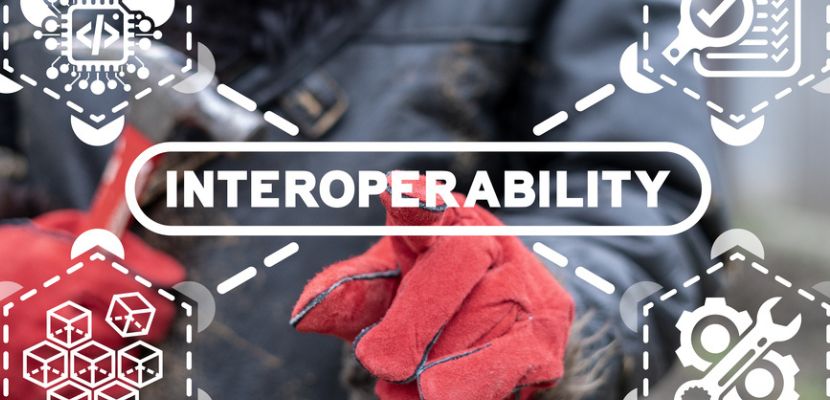Interoperability refers to the ability of different systems, organizations, or applications work together seamlessly. It involves the consistent, efficient, and effective exchange and use of information and services.

What Is Interoperability?
Interoperability is the capacity of various systems, organizations, or applications to operate in unison, facilitating seamless communication and interaction. It involves the consistent and efficient exchange and utilization of information and services, ensuring that different components can work together without any conflicts or misinterpretations.
This concept is crucial across numerous sectors such as healthcare, information technology, and telecommunications, where it enables diverse systems to communicate, share data, and function cohesively. Achieving interoperability often requires standardization and adherence to common protocols, allowing systems to integrate and interact as if they were a single, unified entity, thus enhancing overall efficiency, productivity, and user experience.
How Does Interoperability Work?
Interoperability works by enabling different systems, applications, or organizations to communicate and exchange data effectively. This process involves several key elements:
- Standardization. Common standards and protocols are established to ensure that systems can interpret and use shared data correctly. These standards cover data formats, communication protocols, and interfaces.
- Data exchange. Systems exchange data in a predefined format, ensuring that the receiving system can understand and process the information as intended. This involves using standardized messaging formats, APIs (application programming interfaces), and data schemas.
- Integration. Different systems are integrated using middleware or intermediary software that translates and routes data between them. This integration layer handles differences in data formats and communication protocols, ensuring smooth interaction.
- Consistency and accuracy. Interoperability ensures that data remains consistent and accurate as it moves between systems. Data validation, synchronization, and error handling maintain data integrity.
- Security and privacy. Interoperable systems implement robust security measures to protect data during exchange. Security measures include encryption, authentication, and access controls to ensure that only authorized entities can access and modify the data.
Interoperability Types
Interoperability is essential for ensuring that diverse systems can work together effectively. It can be classified into several types, each addressing different aspects of system integration and data exchange:
- Technical interoperability. Technical interoperability focuses on the hardware and software components that enable systems to connect and communicate. This includes the physical network infrastructure, communication protocols, and data formats. Technical interoperability ensures that different systems can physically and logically connect, allowing for the exchange of information.
- Semantic interoperability. Semantic interoperability ensures that the meaning of exchanged data is preserved and understood uniformly across different systems. It involves the use of standardized data models, vocabularies, and ontologies to ensure that information is interpreted consistently. This type is crucial for meaningful data exchange, particularly in fields like healthcare, where precise interpretation of data is essential.
- Syntactic interoperability. Syntactic interoperability focuses on the structure and format of data exchange. It involves the use of standardized data formats and communication protocols to ensure that data can be parsed and understood at a basic level by different systems. Syntactic interoperability is concerned with the rules for data structuring, such as XML or JSON schemas.
- Organizational interoperability. Organizational interoperability addresses the alignment of business processes, policies, and practices between different organizations to facilitate effective collaboration and information exchange. This includes agreements on data sharing, governance, and standard operating procedures. It ensures that different entities can work together seamlessly, despite differences in internal processes.
- Process interoperability. Process interoperability involves integrating and coordinating workflows and business processes between different systems or organizations. It ensures that processes can interact smoothly, enabling automated and efficient operations across different platforms. This type is critical for achieving end-to-end integration of services.
Interoperability Use Cases

Interoperability is vital in many sectors, allowing different systems and organizations to work together seamlessly. Here are some key use cases where interoperability plays a crucial role:
- Healthcare. Interoperability in healthcare enables different electronic health record (EHR) systems to exchange patient information. This ensures that healthcare providers have access to complete and accurate patient data, improving diagnosis, treatment, and care coordination. For example, primary care physicians, specialists, and hospitals can share a patient's medical history.
- Finance. In the financial sector, interoperability allows different banking systems to communicate and process transactions. This facilitates activities such as interbank transfers, cross-border payments, and real-time account updates. For example, interoperability enables the seamless transfer of funds between different banks using SWIFT or other standardized messaging systems.
- Information technology. Interoperability in IT allows various software applications and platforms to work together. This includes integrating enterprise resource planning (ERP) systems with customer relationship management (CRM) systems, enabling data flow between departments and improving business processes. For example, an ERP system can automatically update inventory levels based on sales data from a CRM system.
- Telecommunications. In telecommunications, interoperability ensures that different communication networks and devices can connect and interact. This includes enabling calls, messages, and data transfer across different mobile networks and devices. For example, interoperability allows a smartphone on one carrier's network to communicate with another smartphone on a different carrier's network.
- Public safety. Interoperability in public safety ensures that emergency response systems, such as police, fire, and medical services, can communicate and coordinate during emergencies. This involves sharing real-time information and dispatch data to improve response times and effectiveness. For example, a police department can share incident details with fire and medical services to coordinate a comprehensive emergency response.
- Transportation. In transportation, interoperability allows different transportation systems and services to connect and share information. It includes integrating public transit systems, traffic management systems, and ride-sharing services to improve mobility and efficiency. For example, a city's transit authority can share real-time bus and train schedules with ride-sharing apps to facilitate seamless travel planning for users.
Interoperability Benefits and Challenges
Understanding the benefits and challenges of interoperability is crucial for appreciating its role in enhancing system efficiency and collaboration. While interoperability offers significant advantages, such as improved data sharing and streamlined operations, it also presents challenges like standardization and security concerns. This section explores the key benefits and obstacles associated with achieving effective interoperability.
Benefits
Interoperability offers numerous benefits, significantly enhancing the efficiency and effectiveness of systems and organizations. Below are some key benefits:
- Improved data sharing. Interoperability facilitates seamless data exchange between different systems, ensuring that accurate and up-to-date information is available where and when it is needed. This enhances decision-making processes and enables more informed actions.
- Enhanced efficiency. By enabling different systems to work together, interoperability reduces redundancy and streamlines operations. It leads to faster processes, reduced operational costs, and improved resource utilization.
- Better collaboration. Interoperability promotes collaboration between different departments, organizations, and even sectors. A more collaborative approach fosters improved problem-solving and service delivery, boosting overall outcomes.
- Improved user experience. Interoperability ensures that users have a consistent and seamless experience when interacting with different systems. This reduces frustration and increases satisfaction, as users can access and use information across platforms without barriers.
- Enhanced security and compliance. Standardized data exchange protocols and practices help maintain data integrity and security. Interoperability supports regulatory compliance by ensuring that data handling processes meet industry standards.
Challenges
Achieving interoperability involves overcoming various challenges that hinder seamless integration and data exchange. These challenges must be addressed to ensure effective communication and collaboration between different systems. Here are some key interoperability challenges:
- Standardization. One of the biggest challenges is the lack of universal standards. Different industries and organizations may use varied protocols, data formats, and communication methods, making it difficult to achieve seamless integration.
- Data security and privacy. Ensuring the security and privacy of data exchanged between systems is critical. Interoperability can expose sensitive information to potential breaches if proper security measures, such as encryption and authentication, are not implemented.
- Compatibility issues. Systems developed at different times or by different vendors may have compatibility issues. These systems may use different technologies, architectures, or platforms, making integration difficult.
- Cost and resource constraints. Implementing interoperability can be expensive and resource-intensive. Organizations may need to invest in new technologies, training, and ongoing maintenance to achieve and sustain interoperability.
- Governance and coordination. Effective interoperability requires coordinated efforts and governance among multiple stakeholders, including organizations, regulatory bodies, and standardization groups. Aligning interests, managing cooperation, and ensuring compliance with regulations can be challenging.
- Data quality and consistency. Interoperability depends on high-quality and consistent data. Variations in data entry, coding systems, and data management practices can lead to discrepancies and errors, complicating data exchange and integration.
Interoperability vs. Integration
Interoperability focuses on enabling different systems to work together seamlessly, often through the use of standardized protocols and interfaces, allowing for more flexible and scalable interactions.
Integration refers to the process of combining different systems or components into a single, unified system, often requiring customized connections and interfaces to enable data exchange and functionality. This results in tightly coupled systems that work well together but may lack flexibility.
While integration can create efficient workflows within a specific environment, interoperability provides broader compatibility and communication across diverse systems and platforms, fostering collaboration and innovation.
Interoperability vs. Compatibility
Interoperability extends beyond simple compatibility to encompass the ability of diverse systems and organizations to exchange and use information seamlessly across different platforms and contexts.
Compatibility, on the other hand, refers to the ability of two systems or components to work together without modification. It is typically limited to specific environments and scenarios, ensuring that devices or software can operate with each other as intended.
Interoperability requires adherence to common standards and protocols, enabling broad and dynamic interaction, whereas compatibility often involves a more constrained and predefined integration.